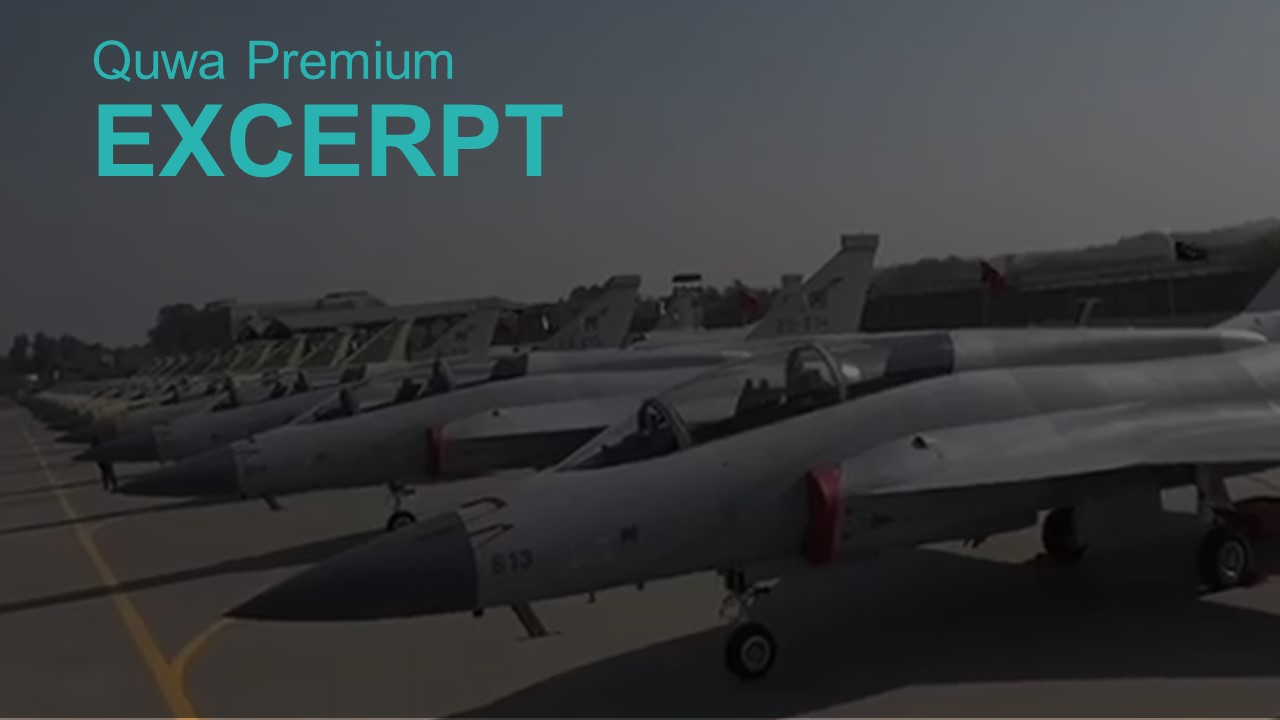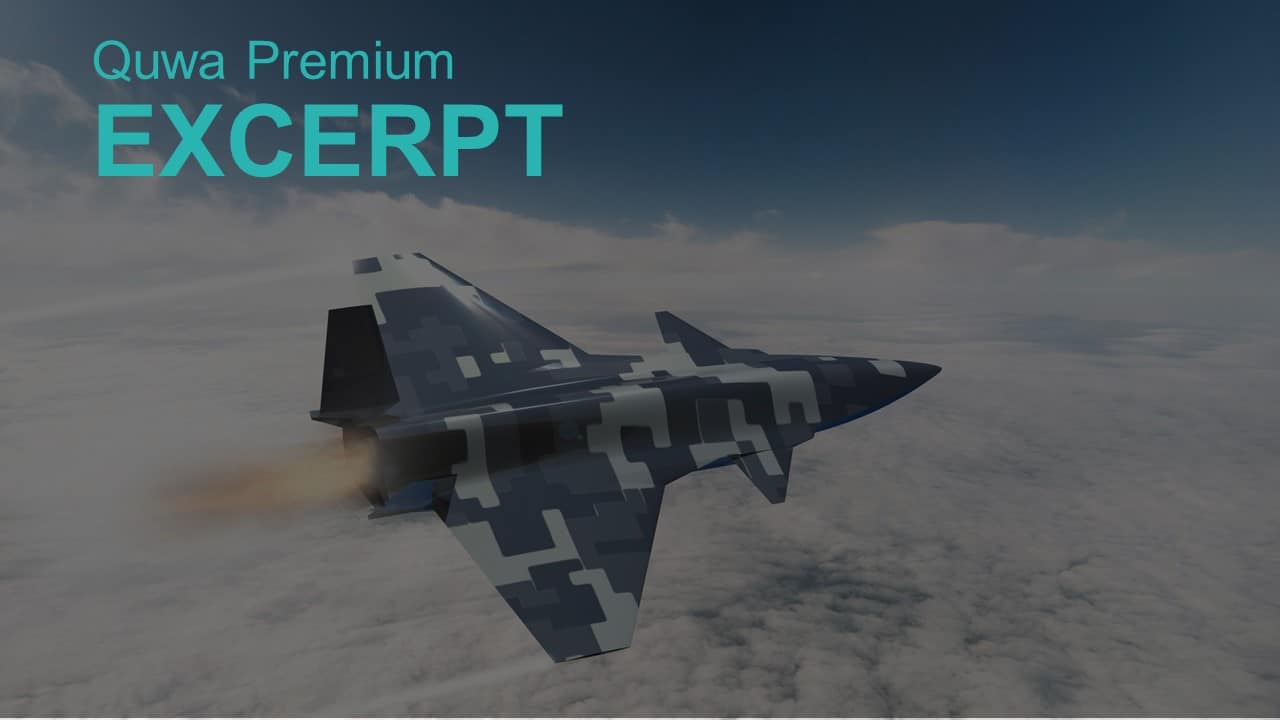3334Views

JF-17B: The Pakistan Air Force’s Growth Asset
Over the next three to five years, the Pakistan Air Force (PAF) combat aircraft fleet will transition to almost entirely 4 and 4+ generation fighters. Though moving past legacy designs such as the Mirage III/5 and F-7P/PG may mark a significant shift on paper, the PAF’s training and doctrine efforts are critical to closing the gap between practice and theory. The JF-17B is the centerpiece of those efforts.
Background on the JF-17B
The JF-17B is the two-seat variant of the JF-17 Thunder, one of the PAF’s mainstay fighter aircraft. Pakistan Aeronautical Complex (PAC) and the Aviation Industry Corporation of China (AVIC) announced the JF-17B’s development start in April 2016.[1] The first JF-17B prototype flew the following year in April 2017.[2]
Though the two-seat version, the JF-17B was also an upgrade of the Thunder in itself. For example, AVIC introduced the new three-axis fly-by-wire (FBW) digital flight control system slotted for the JF-17 Block-3 via the JF-17B. The JF-17B also featured a larger nose cone with the express purpose of one day integrating the KLJ-7A active electronically scanned array (AESA) radar.[3] AVIC also designed in a dorsal spine to carry fuel so as to offset the space taken by the second seat.
PAC took delivery of its first JF-17B (i.e., 17-601) in early 2019. The second unit (i.e., 19-602) followed later that year. In May 2019, the then PAF Chief of Air Staff (CAS), Air Chief Marshal (ACM) Mujahid Anwar Khan revealed that Air Headquarters (AHQ) ordered 26 JF-17Bs.[4] This would be in addition to the JF-17 Block-1, Block-2, and the Block-3, thus bringing the PAF’s total Thunder fleet to well over 150 aircraft.[5]
The PAF received its first 12 JF-17Bs on 30 December 2019, and the remaining 14 the following year on 31 December 2020. However, the PAF lost a JF-17B in an accident on 06 August 2021. The PAF allocated the bulk of the JF-17Bs to No. 18 Squadron (‘Sharp Shooters’), the Operational Conversion Unit (OCU). Besides assigning No.18 to acclimate pilots for the Thunder, the PAF also sent JF-17Bs to each operational frontline squadron to reinforce its training regimen. Each squadron should have at least one JF-17B.[6]
The New Challenge
Interestingly, the PAF was content with using simulators to train pilots for the JF-17. Originally, it did not require a twin-seater.[7] Prior to the JF-17B, pilots would spend 30 hours on simulators (procured by Spain’s Indra) before flying a real aircraft. It seems that the PAF sought the JF-17B to help transition newer, less experienced pilots to both multirole fighter flying and the Thunder in one stroke…
End of Excerpt (429/1,114 words)
You can read the complete article by logging in (click here) or subscribing to Quwa Premium (click here).
For more on the JF-17, see:
- Analysis: The JF-17’s Unique Value Proposition
- JF-17 Block-3 Starts Taking Shape
- Argentina Will Take Another Look at the JF-17 Thunder
[1] Alan Warnes. “Pakistan’s Roaring Thunder.” Air Forces Monthly. May 2021
[2] Ibid.
[3] Ibid.
[4] Alan Warnes. Interview. Air Chief Marshal Mujahid Anwar Khan, Chief of the Air Staff, Pakistan Air Force. IHS Jane’s Defence Weekly. 22 May 2019.
[5] Ibid.
[6] Alan Warnes. “Pakistan’s Roaring Thunder.” Air Forces Monthly. May 2021
[7] Ibid.


